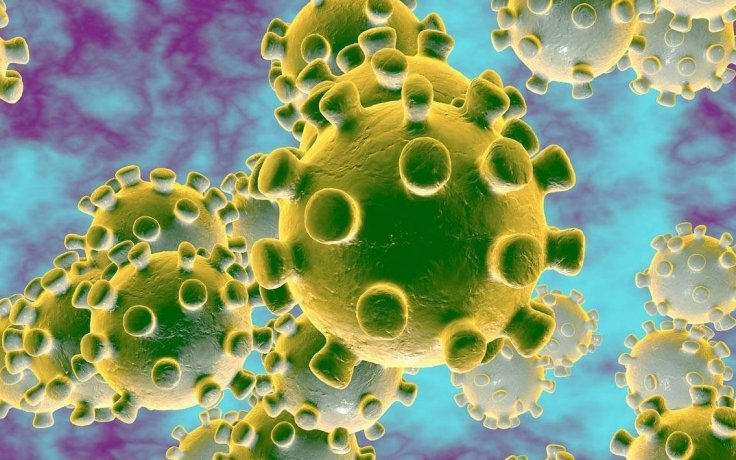A phase 2 trial of an Ad5 vectored COVID-19 vaccine candidate, conducted in China, has found that the vaccine is safe and induces an immune response, according to new research published in The Lancet.
The randomised trial sought to evaluate the safety and immunogenicity of the vaccine candidate and follows a phase 1 trial published in May 2020. The results provide data from a wider group of participants than their phase 1 trial, including a small sub-group of participants aged over 55 years and older, and will inform phase 3 trials of the vaccine.
However, the authors note that it is important to stress that no participants were exposed to SARS-CoV-2 virus after vaccination, so it is not possible for this study to determine whether the vaccine candidate effectively protects against SARS-CoV-2 infection.
Professor Feng-Cai Zhu, Jiangsu Provincial Center for Disease Control and Prevention, China, says: "The phase 2 trial adds further evidence on safety and immunogenicity in a large population than the phase 1 trial. This is an important step in evaluating this early-stage experimental vaccine and phase 3 trials are now underway."
Currently, there are about 250 candidate vaccines against SARS-CoV-2 in development worldwide, including mRNA vaccines, replicating or non-replicating viral vectored vaccines, DNA vaccines, autologous dendritic cell-based vaccine and inactive virus vaccines. At least 17 of them are currently under evaluation in clinical trials.
The vaccine in this trial uses a weakened human common cold virus (adenovirus, which infects human cells readily but is incapable of causing disease) to deliver genetic material that codes for the SARS-CoV-2 spike protein to the cells. These cells then produce the spike protein, and travel to the lymph nodes where the immune system creates antibodies that will recognize that spike protein and fight off the coronavirus.

The study had 508 participants who took part in the trial of the new vaccine. Of these, 253 received a high dose of the vaccine (at 1×1011 viral particles/1.0mL), 129 received a low dose (at 5×1010 viral particles/1.0mL) and 126 received placebo. Approximately two thirds of participants (309; 61%) were aged in 18-44 years, a quarter (134; 26%) were aged 45-54 years, and 13% (65) were 55 years or older. The most common severe reaction was fever.
Trial Process
Participants were monitored for immediate adverse reactions for 30 minutes after injection and were followed for any injection-site or systemic adverse reactions within 14- and 28-days post-vaccination. Serious adverse events reported by participants during the whole study period were documented. Blood samples were taken from participants immediately before the vaccination and 14- and 28-days post-vaccination to measure antibody responses.
The trial found that 95% (241/253) of participants in the high dose group and 91% (118/129) of the recipients in the low dose group showed either T cell or antibody immune responses at day 28 post-vaccination.
The vaccine induced a neutralising antibody response in 59% (148/253) and 47% (61/129) of participants, and binding antibody response in 96% (244/253) and 97% (125/129) of participants, in the high and low dose groups, respectively, by day 28. The participants in the placebo group showed no antibody increase from baseline.
Neutralizing Antibody response
Both doses of the vaccine induced significant neutralizing antibody responses to live SARS-CoV-2, with geometric mean titres of 19.5, and 18.3 in participants receiving the high and low dose, respectively. The binding antibody response peaked at 656.5 ELISA units and 571 ELISA units for the high and low dose of the vaccine, respectively.
T cell responses were also found in 90% (227/253) and 88% (113/129) of participants receiving the vaccine at high and low dose, respectively. A median of 11 spot-forming cells and 10 spot-forming cells per 1 × 10? peripheral blood mononuclear cells in participants in the high dose and low dose groups, respectively, were observed at day 28.
The proportions of participants who had any adverse reactions such as fever, fatigue and injection-site pain were significantly higher in vaccine recipients than those in placebo recipients (72% [183/253] in the high dose group, 74% [96/129] in the low dose group, 37% [46/126] in the placebo group). However, most adverse reactions were mild or moderate.
Within 28 days, 24 (9%) participants in the high dose group had severe (grade 3) adverse reactions, which was significantly higher than in those receiving the low dose or placebo (one (1%) participant in the low dose group, and 2 people (2%) in the placebo group).









